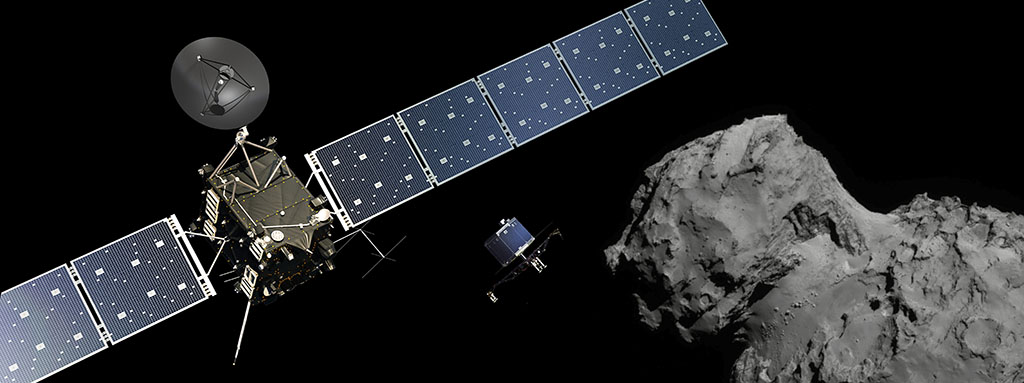Many things have happened since December 2014, when we discussed in this same blog the technological advances in the aerospace context that made the Rosetta probe mission to space possible. The Rosetta mission has already has come to an end, as foreseen. It made a progressive descent lasting several hours, controlling the impact on the surface of the 67P/Churyumov-Gerasimenko comet. The probe has been studying this comet for over 20 months, since it woke up from its state of hibernation almost ten years after it was launched.
The Rosetta probe mission’s great success not only resides in the immense engineering challenge it involved, but also in the huge amount of data that has been obtained and provided to be studied over many years.
There is no doubt that this has been one of the most audacious missions ever carried out in the context of aerospace engineering. Let’s spare a moment to think about the huge challenge of launching a small device into space which then nestles into a comet’s orbit after many years of travelling through space. We shouldn’t lose sight of the difficulty this involves, given the fact that the speed of these astronomical bodies can reach several hundred kilometres per hour. To this we must add the capability of taking samples and sending the data back to Earth. The mission’s success undoubtedly involves not only all the possible aerospace engineering knowledge, but also that its development is providing new knowledge we can use on subsequent missions.
The decision to bring the mission to an end on the comet has produced an exceptional opportunity to study its entire environment. Data on gas, dust and plasma has been collected. Thousands of high-resolution photographs have been taken. Neither should we forget Philae, the module deployed by Rosetta so it could land on the comet’s surface for a few days until its batteries were depleted and dedicated to gathering data directly on the comet’s composition and the effects of its closeness to the sun.
This mission has revolutionised the way we understand and study the solar system and the comets within its midst. Some of the most important results have to do with the gasses expelled from the comet’s nucleus, with the existence of oxygen and nitrogen molecules and water standing out. Research is being conducted on the information obtained to see if there could be any ingredients considered as essential for the origin of life, seeing as glycine – an amino acid which tends to be found in proteins – and phosphorus – an essential element of DNA and cell membranes – were also found.
Other results suggest that comets are vestiges of the initial stages of the Solar System’s formation and not fractions from collisions between larger bodies, as had previously been thought. Data has thus been obtained about how the components which gave rise to the planets 4.5 billion years ago could have been like.
The Rosetta mission has gathered so much information that it has prolonged the ongoing work of technicians for many years. But that’s not all. The volume of data is of such magnitude that several generations of scientists will aim to extract all the possible information from this mission over many years.
Without doubt, this has not been the end of a mission, but rather the beginning of a great deal of research.



